Meet 4 Women Proudly Breaking the Skinny French Girl Stereotype
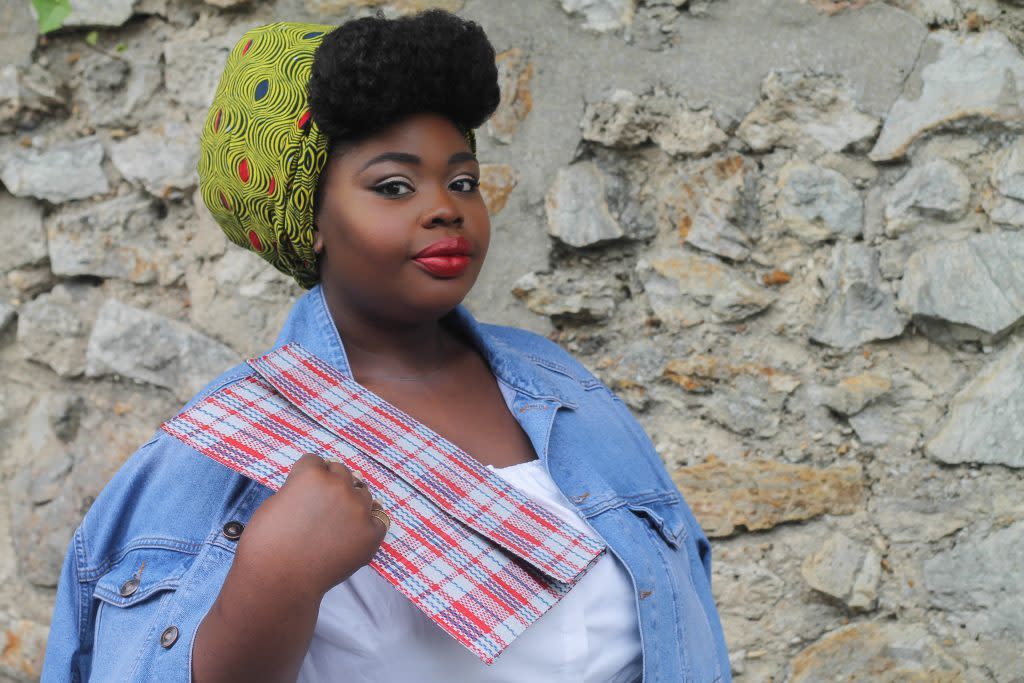
Lawyer turned blogger Gaëlle Prudencio is part of a grassroots movement toward body positivity in France. (Photo courtesy of Gaëlle Prudencio)
We’re told there’s no woman like the French woman. The French woman is chic. The French woman is understated. And, above all, the French woman is effortless. But what happens when the French woman is fat?
It’s a question many of the French would rather not contemplate — certainly not Mireille Guiliano. She turned France’s national mystique around weight into one of its best exports with her 2005 bestseller French Women Don’t Get Fat. In it, she sold the world the dream that anyone could eat bread, cheese, and pâtisseries if only they knew when to stop. “La moitié, s’il vous plaît” was her mantra: Half, please. Half the food, half the size — that’s how French women didn’t get fat. If you weren’t content to eat a baguette one crumb at a time, then maybe you were the problem.
Eleven years later, we know this message was a lie (or a myth, if you’re feeling generous). The truth is that 43 percent of French women over age 20 have a BMI of 25 or higher, which means they are considered overweight or obese. It’s a number that more or less aligns with the French Institute of Textile and Apparel’s estimate, which says 40 percent of French women wear a size 44 (the equivalent of a 12 in the U.S.) or above. These numbers are only slightly lower than U.S. statistics, which estimate that 50 percent of adult women have a BMI of 25 or higher.
Even the so-called normal-size French women who manage to stay out of the grand tailles section admit to struggling with weight. In a 2013 piece for BBC, writer Joanna Robertson portrayed them not as elite players in the game of moderation but as hushed dieters fueled by the tyranny of thinness. Thin is more than a body ideal in France, Robertson reported. It’s a litmus test for success, and there’s zero tolerance for failing.
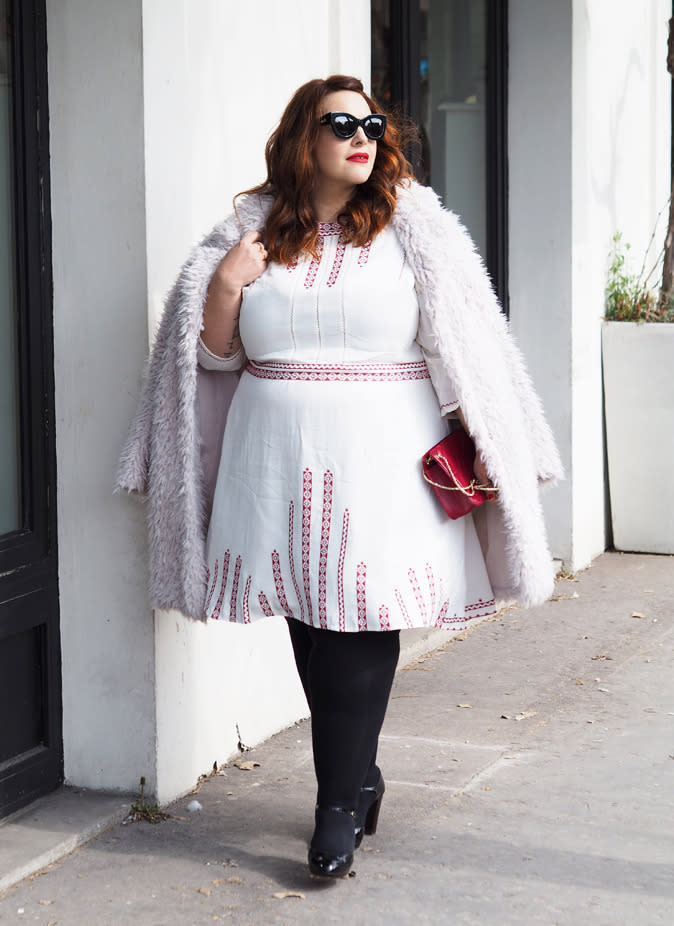
Photo courtesy of Stéphanie Zwicky
“In France, there’s still an idea that women who are round [ronde is one of the most preferred terms for plus-size] have let themselves go, but I do not pay attention to that,” popular Paris-based blogger Stéphanie Zwicky of Le Blog de Big Beauty tells Yahoo Style. “The hardest thing to change is health. When a magazine or a website posts a picture of a fat woman, people say ‘OK, it’s stylish, but what about her health?’ It’s a bit hard to undo on that side.”
This fixation on health is what has become known as “concern trolling” — an insult disguised as altruism. In a 2014 article for the New Yorker, writer Lizzie Widdicombe pinpointed the origin of the practice, which existed long before the first Internet troll hurled his maiden insult. “Health-related critiques of plus-size fashion veil an age-old impulse: the desire to police the prevailing social order, in which fat women are inferior,” she wrote.
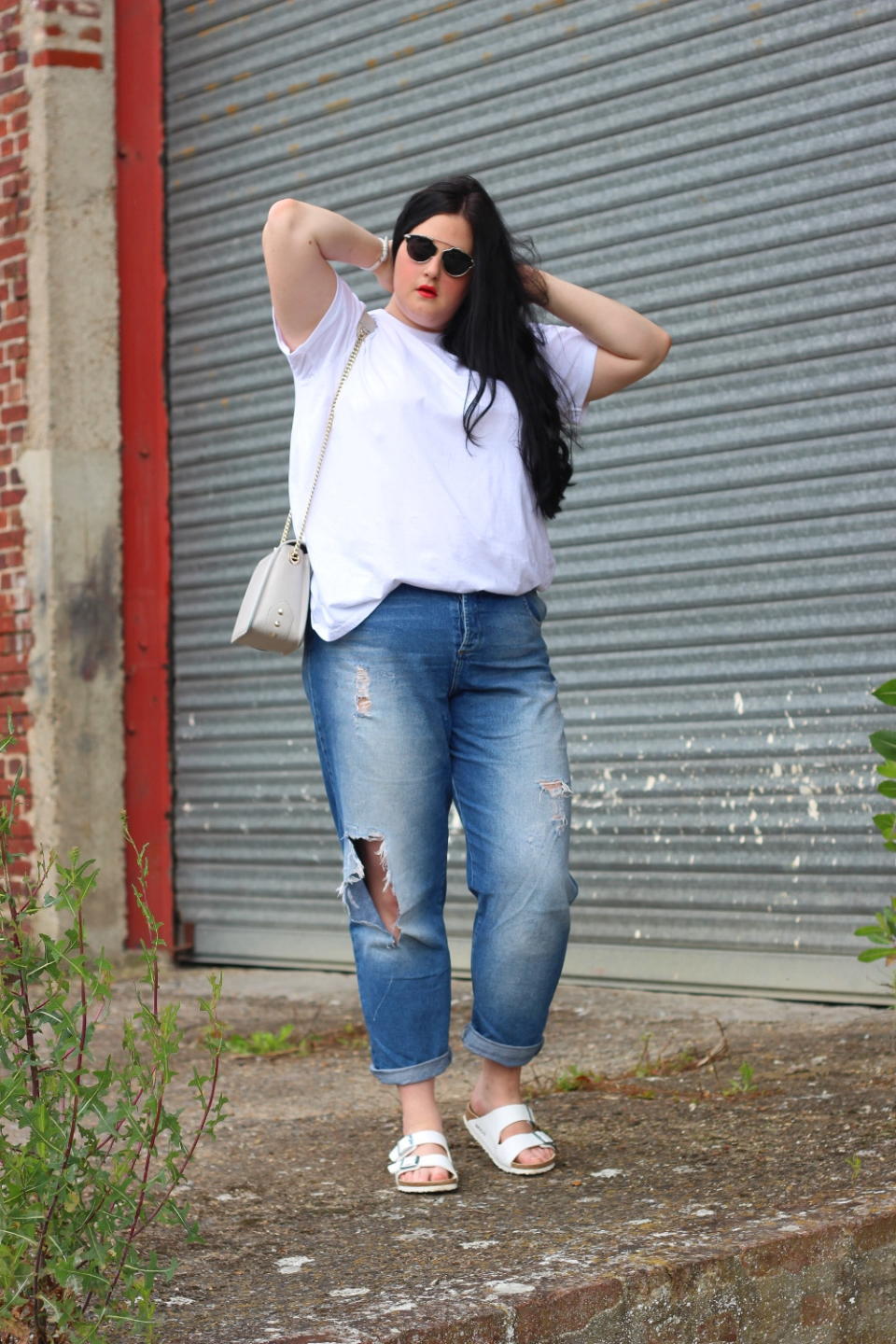
Photo courtesy of Anaïs Pénélope
French blogger Anaïs Pénélope thinks France’s fat phobia is less about weight than it is about a societal fear of anything different. “I disturb people who believe you have to be thin to be happy. When I tell people, ‘I am fat and I am OK with that,’ they are completely afraid,” she says. “For them, being fat is a bad thing. It is inconceivable that someone like me can be a vehicle for body positivity.”
It’s not that the body-positivity movement isn’t happening in France, but it’s still very much a niche conversation. La Pulp Fashion Week holds a weekend of plus-size fashion shows, but it’s completely siloed from Paris Fashion Week. Instead, it takes place weeks after PFW ends and is sponsored by Histoire de Courbes, a group whose sole purpose is to celebrate women’s curves. It may look and sound like progress, but La Pulp’s infrequently updated site and dead social media links make it an unlikely agent of change.
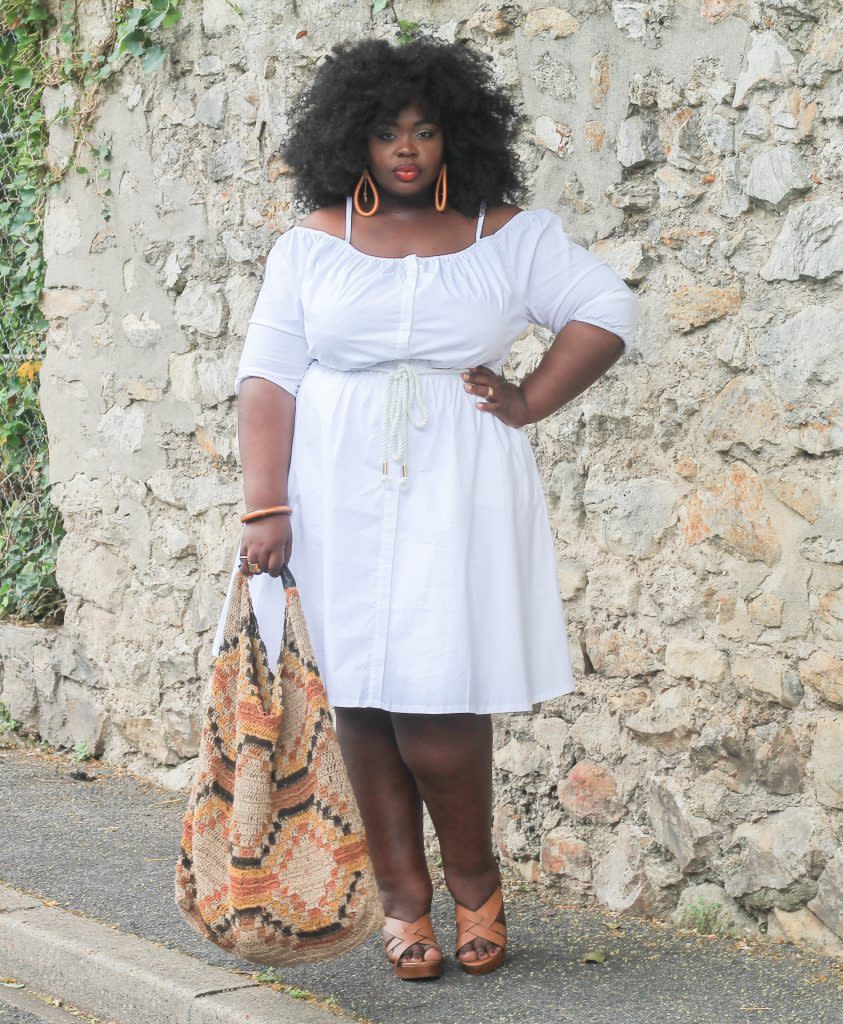
Photo courtesy of Gaëlle Prudencio
Gaëlle Prudencio, a Senegal-born Parisian, has had more success with grassroots efforts. The lawyer turned blogger created the French Curves Challenge three years ago, bringing together 50 French bloggers for themed outfit challenges. Her most successful challenge to date (in terms of views) was for bikinis, though she’s quick to point out that her endgame was never to evangelize the two-piece suit. “It’s more about embracing your body and being happy enough with it to enjoy some time in the pool,” she says.
This idea of self-acceptance and self-respect is what the body-positivity movement is built on, but it can only go so far without the support of stores and designers. French model and blogger Lalaa Misaki loves Paris’s boutiques but says she isn’t always welcomed in them. “Unfortunately, when you go into one of them, you have looks like, ‘What is she doing here?’” Misaki says. “Store clerks will often come out say, ‘Sorry, but we do not have your size here.’ But so what? I cannot look, buy an accessory, buy a gift?’”
Zwicky has not experienced such overt prejudice, but she says Paris is the worst city to shop for plus-size clothes. That realization was a disappointing one for the Switzerland native who thought moving to the fashion capital of the world would mean endless options. “The fashion here does not exceed 42/44,” she says. “There are too few shops for curvy girls. When I go to the U.S. or even the U.K., it is a paradise compared to here.”
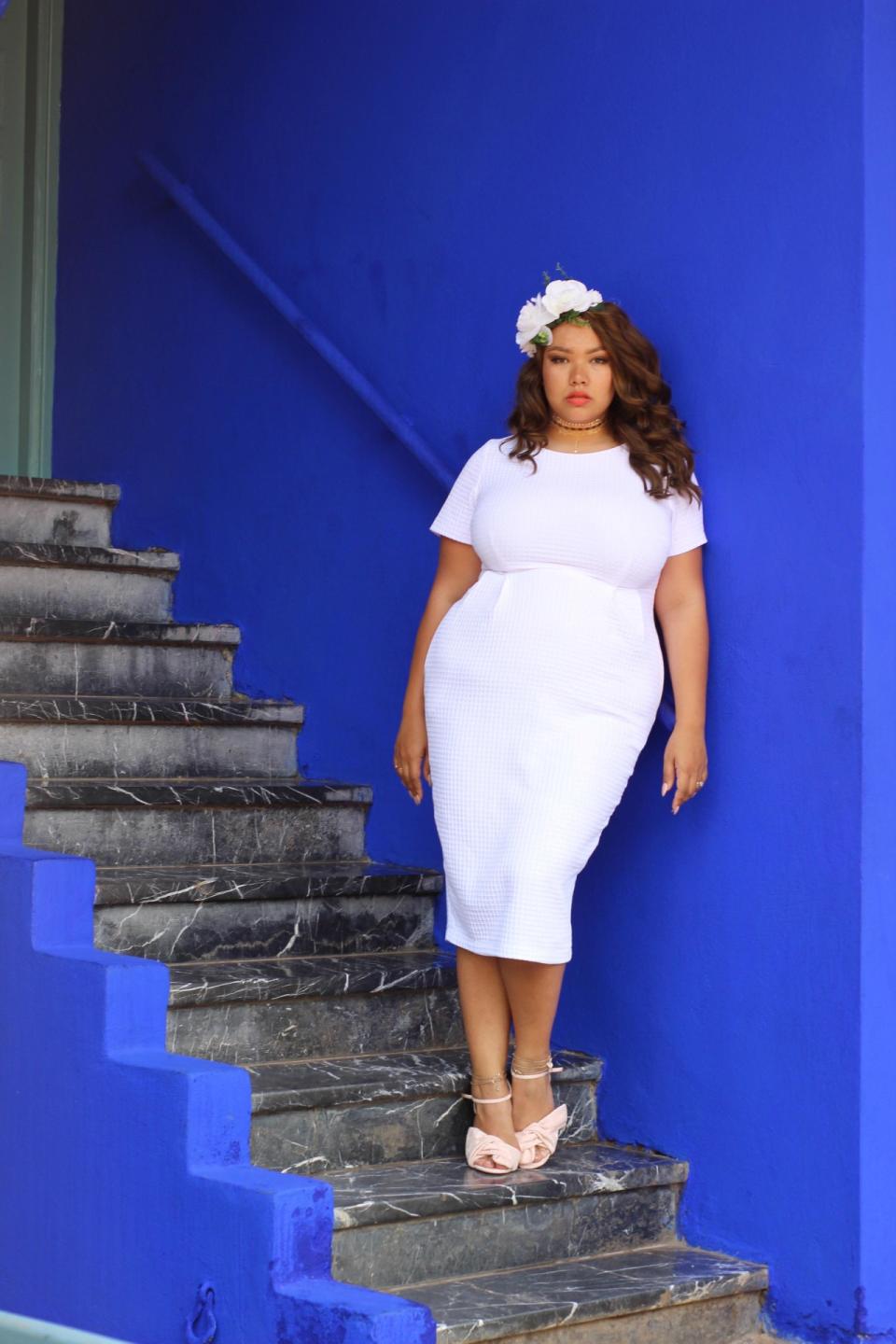
Photo courtesy of Lalaa Misaki
In Paris, mass retailers like Forever 21 might have an obligatory plus-size section, but it’s often small, hidden, and far too limited in options to be considered reliable. Women Curves, a two-story haven in the second arrondissement, was a must-shop, but it closed its doors last week. A post on its Facebook page left hope for a potential reopening in another location, though for now, it seems like yet another setback.
This dearth of brick-and-mortars has sent women to the Internet to shop. Asos Curve, Rebdolls, Missguided’s plus-size collection, and other U.S. and U.K. retailers are popular choices, but French brands like Castaluna, Kiabi, and Balsamik do exist. Independent designers offer hope as well, and several names come up again and again: Anna.Poe, Pauline et Julie, Jiuly Paris, Jean Marc Philippe, and Chiffon de Paris.
Change is slow, but the women we spoke to are hopeful and inspired by what they see in the U.S. and U.K., where curvy models cover billboards and big-name designers have plus-size collections. Pénélope knows this is hardly altruistic, but the fact that there is very real money to be made in plus-size fashion is what makes it so poised for global growth.
“American brands are aware of the potential of the plus-size market and of the purchasing power of the curvy ladies who just want to be fashionable and spend their money for great clothes,” she tells us. “In France, there are still a lot of efforts to be made, but I believe in it.”

